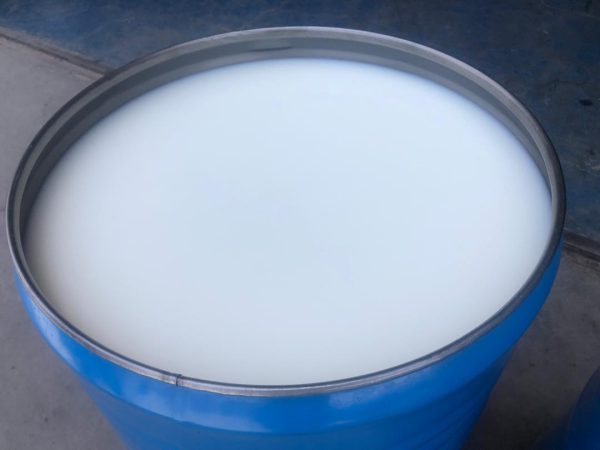
At RAHA Paraffin Wax, We are Exporter and pharma petroleum jelly supplier in Europe, Africa and Asia. We can Supply different grades of Pharma petroleum jelly Across the World.
Description of Petroleum Jelly Pharma
Pharma petroleum jelly is a mixture of natural waxes and mineral oils that together lock moisture in the skin, moisturizing it to repair and relieve dryness. petroleum jelly pharma grade is made by the waxy petroleum material that formed on oil rigs and distilling it. petroleum jelly has been used in various ointments and as a lubricant. The history of vaseline starts in 1859. That s where oil workers had been using rod wax, an unrefined form of petroleum jelly then just a simple by-product of the drilling they were working on to heal wounded or burnt skin.
medical use of petroleum jelly, for example, Ointment, Bandages, Eye Drugs, Skin Medicine.
Application of Pharma Petroleum Jelly
petroleum jelly pharma grade is used all over the world to protect and heal dry skin, from dry, cracked hands to hard skin on heels, as well as for beauty purposes, like softening the lips or highlighting the cheekbones. Vaseline is used to protect and repair the skin. Vaseline is used for preventing diaper rash, but it can also be used to protect minor cuts and burns, to soften skin, and to lock in moisture in dry, cracked skin.
Production Process Of Petroleum Jelly
The production of petroleum jelly involves several steps, including the refining and processing of crude oil.
Here’s an overview of the production process:
- Crude Oil Refining: Petroleum jelly is derived from crude oil. The first step is the refining of crude oil in a petroleum refinery. Crude oil is heated, and different components are separated based on their boiling points. During this process, a semi-solid substance known as “slack wax” is obtained.
- Deoiling: The slack wax obtained from crude oil refining contains a mixture of oil and wax. To separate the wax from the oil, the slack wax is mixed with a solvent, such as hexane. The wax dissolves in the solvent, while the oil remains separated.
- Filtering and Distillation: The solvent-wax mixture is then filtered to remove any impurities or solid particles. The solvent is distilled off from the wax to recover it for reuse in the process.
- Hydrogenation: The deoiled wax may undergo a hydrogenation process to remove any unsaturated hydrocarbons and make the product more stable. This involves exposing the wax to hydrogen gas at elevated temperatures and pressures.
- Cooling and Solidification: The purified wax is then cooled and allowed to solidify. It can be formed into blocks, slabs, or other shapes for packaging.
It’s important to note that the specific details of the production process may vary slightly from one manufacturer to another. Additionally, the quality and purity of the crude oil used can affect the quality of the final petroleum jelly product. Manufacturers typically adhere to strict quality control standards to produce a safe and effective product for various applications, including skincare.
Packing of Vaseline Pharma Grade
petroleum jelly pharma grade is packed in new steel or PE 190 kg drums. Each 20-foot container can be loaded 80 drummed of petroleum jelly. We are flexible to change packing type according to the customer demand such as 25 Kg, 50 Kg and 90 Kg drums. The best economical option is to use 40 Ft. containers which contains 145 drums.
Analysis of Pharma Grade Petroleum Jelly
Pharmaceutical & cosmetic grade A+
Medical use of petroleum jelly for example Ointment, Bandages, Eye drugs, Skin medicine
| NO | CHARACTERISTIC | RESULT | ACCEPTED LIMIT | METHOD |
| 1 | Kinematic viscosity at 100 ˚C | 6.1 cSt | 6-8 cSt | ASTM D-445 |
| 2 | Congealing Point | 57 ˚C | 45-58 ˚C | ASTM D-938 |
| 3 | Penetration Consistency | 127 (0.1 mm) | 120-130 (0.1 mm) | ASTM D-937 |
| 4 | Color (Lovibond) | 0.2 Y | Max 0.5 Y | IP-17 Method A 2 cell |
| 5 | Acidity or Alkalinity | Passed | According to test method | B.P 2007 |
| 6 | Odor | Passed | Odorless when rubbed on hand | ——- |
| 7 | Polycyclic aromatic Hydrocarbons | Passed | Not more than absorbance of solution 6mg/l Naphthalene in DMSO @ 278 nm | B.P 2007 |
Pharmaceutical & cosmetic grade B+
Usually used in creams and ointment for skin curing
| NO | CHARACTERISTIC | RESULT | ACCEPTED LIMIT | METHOD |
| 1 | Kinematic viscosity at 100 ˚C | 4.7 cSt | 4.5-6 cSt | ASTM D-445 |
| 2 | Congealing Point | 51 ˚C | 50-54 ˚C | ASTM D-938 |
| 3 | Penetration Consistency | 145 (0.1 mm) | 140-160 (0.1 mm) | ASTM D-937 |
| 4 | Color (Lovibond) | 0.5 Y | Max 0.5 Y | IP-17 Method A 2 cell |
| 5 | Acidity or Alkalinity | Passed | According to test method | B.P 2007 |
| 6 | Odor | Passed | Odorless when rubbed on hand | ——- |
| 7 | Polycyclic aromatic Hydrocarbons | Passed | Not more than absorbance of solution 6mg/l Naphthalene in DMSO @ 278 nm | B.P 2007 |
pharma petroleum jelly supplier
RAHA Paraffin Wax is a pharma petroleum jelly supplier Across world, We supply high-quality pharma petroleum jelly, tailored to meet the needs of various industries. we can deliver the mentioned Vaseline types to destination ports as requested by the customer. However, our team will assist at every step to ensure a smooth and timely supply. (Contact Us)
Common Questions
1.Which European countries can we export petroleum jelly to ?
We can export pharma petroleum jelly to most European countries, including:
Romania, Serbia, Greece, Bulgaria, Ukraine, Poland, Italy, Bosnia, the Balkans, North Macedonia, Croatia, Slovenia, Austria, Slovakia, Hungary, and Lithuania.
2. Which African countries can we export petroleum jelly to ?
As a supplier of Pharma petroleum jelly in African countries. The petroleum jelly could be exported to:
Sudan, Nigeria, Ghana, Algeria, Morocco, South Africa, Djibouti, Ethiopia, Tanzania and Kenya
3. Which packing can we export for petroleum jelly?
petroleum jelly can be packed in new steel or PE 190 kg drums.
4. What is the minimum order quantity (MOQ) for pharma petroleum jelly ?
The MOQ for petroleum jelly orders to African countries is typically 20 metric tons, depending on the packaging type and destination.


